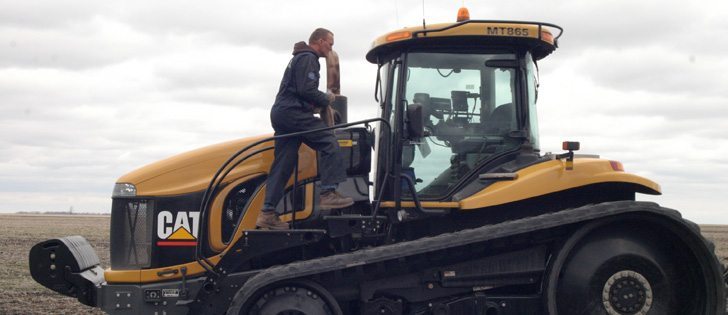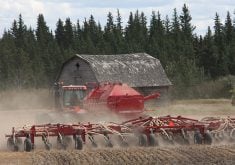Seeding already underway | While sowing conditions are ideal in many areas, farmers are waiting for soil to warm up
ST. FRANCIS XAVIER, Man. — So what’s it like to be able to seed canola into perfect conditions at the end of April?
“It feels good,” said Guenter Jochum with a broad smile as he headed to his tractor to seed a dry field with canola seed April 25.
That’s a common feeling across much of Manitoba and eastern Saskatchewan this spring as thousands of farmers prepare to seed millions of acres of land that were lost to flooding and saturation last year.
The field that Jochum was about to seed was partially submerged last year at this time as the Assiniboine River grew to the bursting point and backed up water across many fields. This field saw a new river develop across it, with the water flowing in the opposite direction one would expect — away from the river and up toward higher land.
Read Also

VIDEO: Agritechnica Day 4: Robots and more robots, Nexat loves Canada and the trouble with tariffs
Agritechnica Day 4: Robots and more robots, Nexat loves Canada and the trouble with tariffs.
Last year’s flooding became a crisis as the Assiniboine and Souris situations grew extreme. Roads were submerged and destroyed and land had no way to drain. The floods hit between mid-April and late May, so farmers generally had no way to get a crop in before crop insurance deadlines in many areas.
Riverside flooding was a problem for farmers beside rivers, but the generally heavy rain in many areas during the late spring combined with overflowing rivers to keep land saturated until the latter half of the growing season, when farmland could finally drain.
Some farmers seeded canola by air on fields that were too wet to work, in the hopes that they could work in the seed and manage it once it was growing.
Much was left to grow weeds until the land was firm enough to allow chemical weed control and tillage by ground. Millions of acres of unintended summerfallow appeared.
This year a hot March and dry April has allowed most farmers to prepare their fields without many problems. Dryness is the most commonly cited potential problem, but showers came on the weekend and timely rain was in the forecast.
Don Mazier, a Brandon-area farmer and Keystone Agricultural Producers vice-president, said April 30 that farmer spirits are high after a terrible 2011.
Good conditions now mean farmers can get on with farming.
“It’s ideal sowing conditions right now,” said Mazier, who had temporarily stopped seeding for a shower to sink in, but who was grateful for the moisture. “Soil temperature’s the biggest concern right now.”
Most of the seeding in western Manitoba and eastern Saskatchewan has probably been wheat and other cereals as farmers wait for the soil to warm up for other crops.
It has been warmer in the Red River Valley, and other crops are possible, so a wide variety of seeding has already occurred and green shoots are visible across the region.
As Jochum’s tractor moved off with the seeder placing this year’s crop, a light cloud of dust rose into the cool air.
Mazier said farmers generally have enough soil moisture from last year’s floods to get this crop off to a start, but they will now begin the perennial situation of anxiously watching the weather.
“If we get the seed in OK and there’s no moisture for two weeks, then we’ll worry,” said Mazier.
“Timely rains are the next thing.”
















